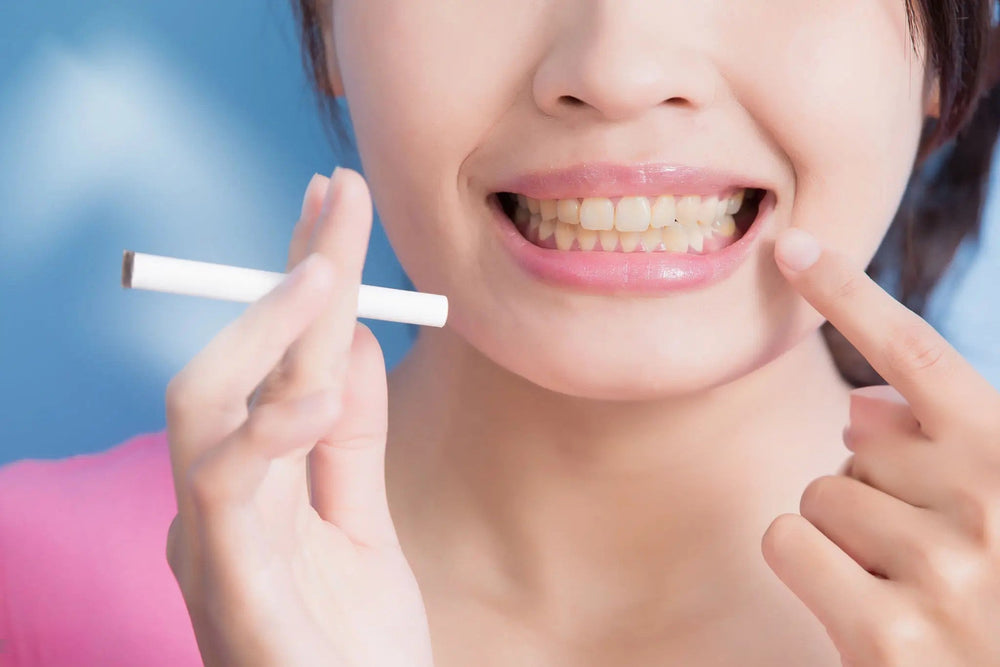How Smoking and Vaping Affect Oral Health

Maintaining oral health is critical for overall well-being, yet smoking and vaping pose significant risks to dental hygiene and general oral care. Below, we explore the various ways in which these habits impact oral health and why quitting is vital for a healthier smile.
1. Staining of Teeth and Gums
Smoking introduces tar and nicotine into the mouth, which can cause yellow or brown discoloration of teeth. Over time, these stains penetrate enamel and become difficult to remove. Similarly, vaping liquids containing nicotine can lead to discoloration, albeit to a lesser extent than smoking.
2. Bad Breath (Halitosis)
Both smoking and vaping contribute to persistent bad breath. Smoking reduces saliva production, creating a dry environment conducive to bacterial growth. Vaping, though less severe, also introduces chemicals that can alter the mouth’s natural balance and contribute to unpleasant odors.
3. Gum Disease and Periodontal Issues
Tobacco in cigarettes damages gum tissue, restricting blood flow and reducing the body’s ability to fight infections. This often results in gingivitis and, if untreated, progresses to periodontitis—a severe form of gum disease that can lead to tooth loss. Vaping liquids with nicotine also constrict blood vessels, impacting gum health and potentially leading to similar complications.
4. Increased Risk of Oral Cancer
Smoking is one of the leading causes of oral cancer. The repeated exposure of oral tissues to carcinogens in cigarettes significantly increases this risk. While vaping is often marketed as a safer alternative, some studies suggest that prolonged exposure to certain chemicals in e-liquids could also contribute to cellular damage and increase the risk of cancer.
5. Delayed Healing After Dental Procedures
Both smoking and vaping impair the body’s ability to heal. Nicotine reduces blood flow, limiting oxygen and nutrients necessary for recovery. This can prolong healing times after procedures like tooth extractions, implants, or periodontal treatments.
6. Dry Mouth and Its Consequences
Smoking decreases saliva production, leading to xerostomia (dry mouth). Saliva plays a crucial role in neutralizing acids and washing away food particles. Vaping, too, can reduce saliva flow due to the presence of propylene glycol in e-liquids, exacerbating dry mouth and increasing the risk of cavities and infections.
7. Damage to Taste and Smell
Smoking dulls the senses of taste and smell, making it harder to enjoy food and detect odors. Vaping, while less detrimental, can also impair these senses over time due to the inhalation of certain chemicals.
8. Impact on Orthodontic and Cosmetic Treatments
Smoking and vaping can hinder the success of orthodontic treatments like braces and aligners. Nicotine’s impact on blood flow can also compromise cosmetic procedures such as teeth whitening and veneers, reducing their effectiveness and longevity.
Steps to Mitigate Damage
If quitting smoking or vaping feels overwhelming, consider these steps to protect your oral health:
-
Regular Dental Visits: Schedule routine cleanings and check-ups to address issues early.
-
Practice Good Oral Hygiene: Brush twice daily, floss, and use antibacterial mouthwash.
-
Stay Hydrated: Drink plenty of water to counteract dry mouth.
-
Seek Professional Help: Consult a dentist or healthcare provider for resources to quit smoking or vaping.
Conclusion
Smoking and vaping have far-reaching consequences on oral health, from staining and bad breath to life-threatening conditions like oral cancer. Understanding these risks is the first step toward making informed decisions about your habits. By prioritizing your oral health and seeking support to quit, you can protect your smile and overall well-being for years to come.

 AU
AU







